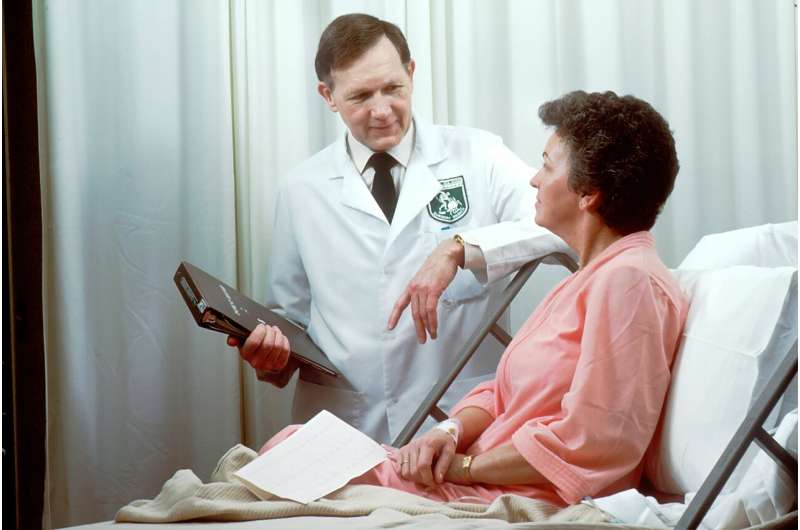This article has been reviewed according to Science X's editorial process and policies. Editors have highlighted the following attributes while ensuring the content's credibility:
fact-checked
peer-reviewed publication
reputable news agency
proofread
Small-town patients face big hurdles as rural hospitals cut cancer care

For rural patients, getting cancer treatment close to home has always been difficult. But in recent years, chemotherapy deserts have expanded across the United States, with 382 rural hospitals halting services from 2014 to 2022, according to a report published this year by Chartis, a health analytics and consulting firm.
Texas led that list, with 57 rural hospitals—nearly half of those statewide that had offered chemotherapy—cutting the service by 2022, according to the analysis. Rural hospitals in states like Texas, which hasn't expanded Medicaid, have been more likely to close, according to data from the Cecil G. Sheps Center for Health Services Research.
To keep the doors open, financially strapped facilities in small communities nationwide continue to shed basic health care services, like obstetrics and chemotherapy, said Michael Topchik, executive director of the Chartis Center for Rural Health.
"The data are staggering," Topchik said. "Can you imagine feeling that sick, and having to drive an hour in each direction, or maybe more each direction, several times a week?"
Loss of chemotherapy services can signal other gaps in cancer care, such as a shortage of local specialty physicians and nurses, which is bad news for patients, said Marquita Lewis-Thames, an assistant professor at Northwestern University in Chicago whose research covers rural cancer care.
Rural patients are less likely to survive at least five years after a cancer diagnosis compared with their urban counterparts, concluded a study co-authored by Lewis-Thames and published in JAMA Network Open in 2022. While the rural-urban survival gap narrowed over the nearly 40 years researchers studied, the disparity persisted across most racial and ethnic groups, with only a few exceptions, she said.
Many cancer drugs are now given orally and can be taken at home, but some treatments for breast, colon, and other common cancers must still be administered intravenously inside a medical facility. Even distances of an hour or two each way can strain patients who already may be coping with nausea, diarrhea, and other side effects, physicians and patient advocates said.
"It's pretty uncomfortable for some of these patients who may have bone metastases or have significant muscular pain and have to sit in the car that long and hit road bumps," said Shivum Agarwal, a family physician who practices in rural communities an hour west of Fort Worth, Texas.
Plus, travel can cost much more than filling the gas tank.
"Usually it requires an able-bodied family member taking off a whole day or at least half a day from work," Agarwal said. "So, there's a big economic cost for the family."
Cancer infusions can last as long as eight hours on top of the travel time, causing significant financial and logistical challenges, said Erin Ercoline, executive director of the San Antonio-based ThriveWell Cancer Foundation.
The nonprofit provides adult patients with financial assistance, including for gaps in insurance and transportation-related costs.
Not all rural hospitals are ending chemotherapy. Childress Regional Medical Center, a 39-bed hospital in West Texas, is constructing a 6,000-square-foot center for patients who need infusions for cancer and other diagnoses, including multiple sclerosis and rheumatology.
The infusion area, which started with two chairs in 2013 and now has four, will grow to 10 chairs and have more patient privacy when it opens next year. The next-nearest infusion center in this sprawling region is an hour or more away, which discourages some patients from seeking care, said Childress' CEO, Holly Holcomb.
"We've had a handful of patients say, 'If you can't do it here, I'm not doing it,'" Holcomb said. She credits the federal 340B drug discount program for enabling the remote hospital to provide infusion drugs.
Hospitals that qualify for 340B can buy outpatient drugs at steep discounts. The program provides "a huge kickstand for rural hospitals," said Topchik, of Chartis Center. Hospitals can use the savings to buy or expand services provided to the community, he said.
2024 KFF Health News. Distributed by Tribune Content Agency, LLC.



















